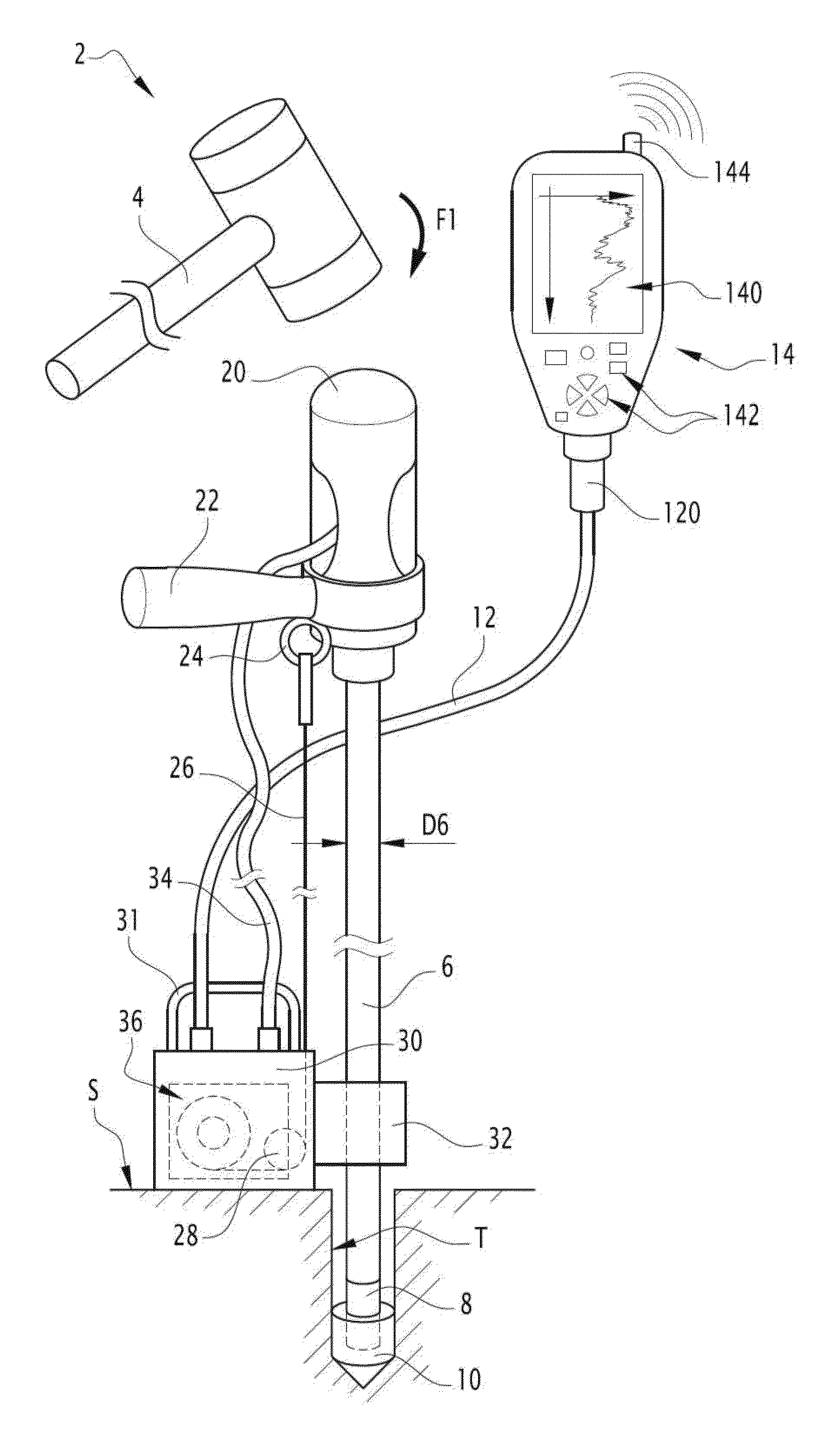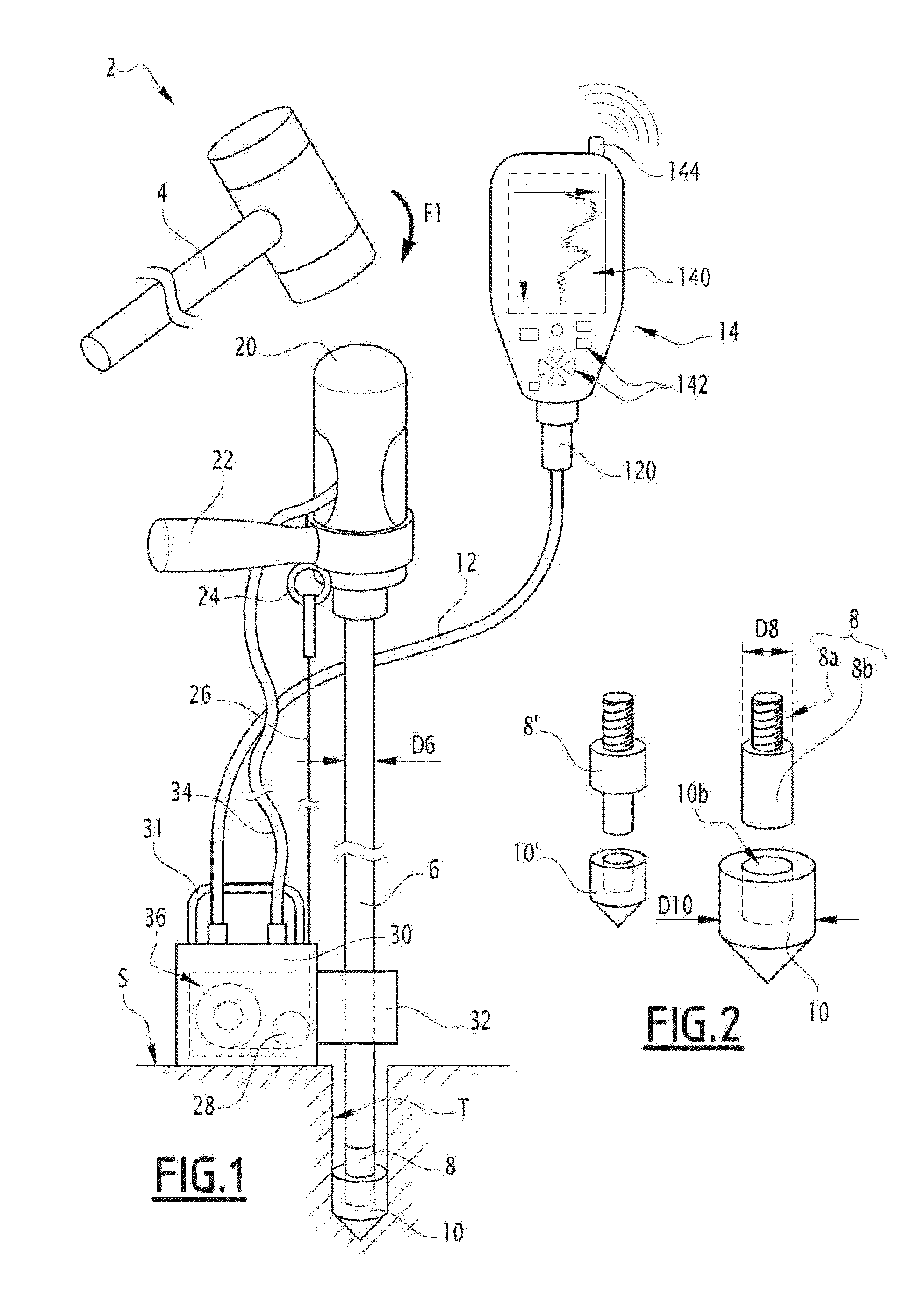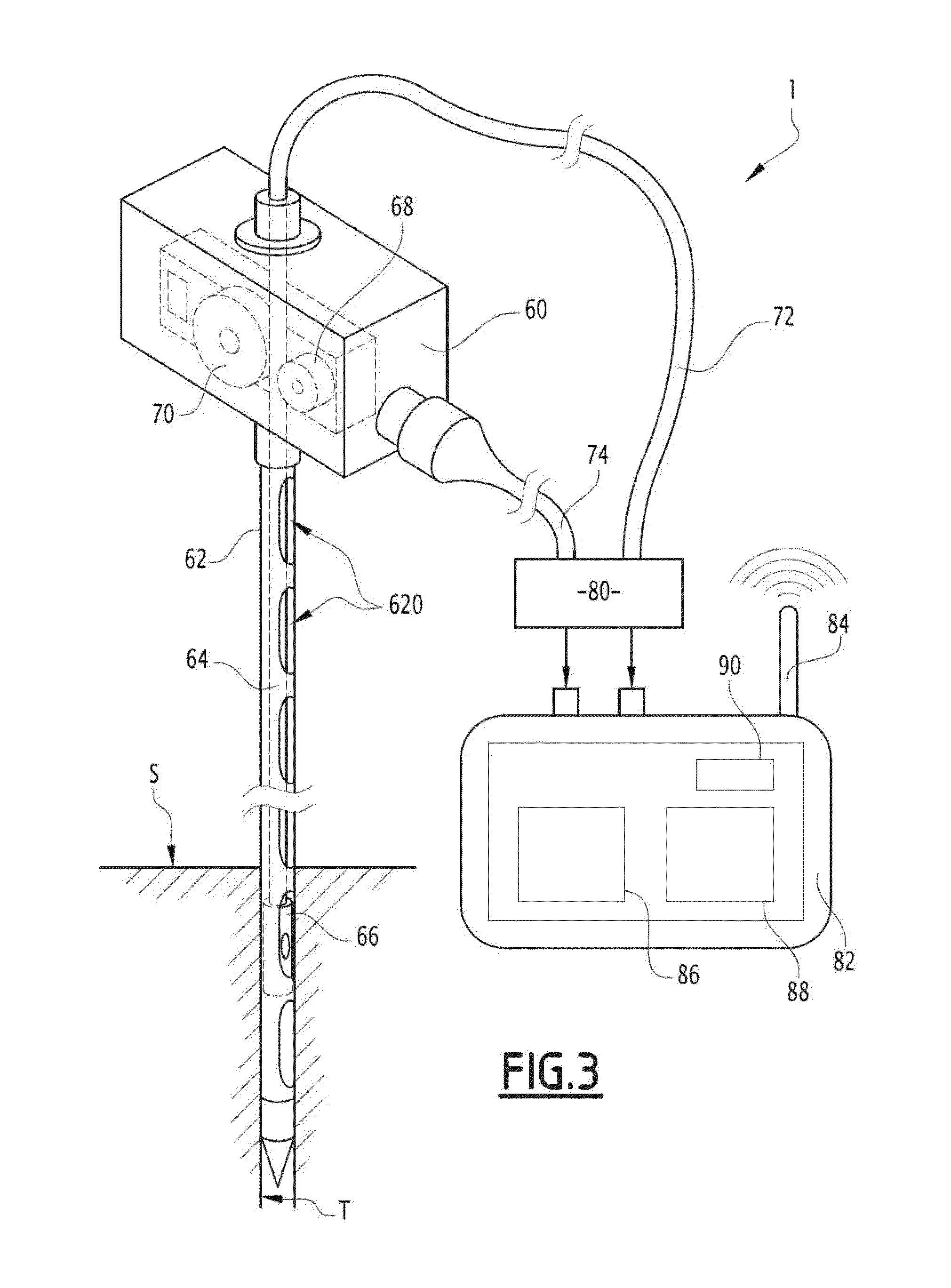Method for characterizing the seat of a railroad track, device for viewing the inside of a ground and assembly for characterizing the seat of a railroad track comprising such a device
a technology for railroad tracks and seats, which is applied in the direction of television systems, instruments, and ways. it can solve the problems of increasing maintenance costs, accelerating wear of track components, and avoiding systemic errors in measurement acquisition, and reducing the performance and exploitation time of drilling operations
- Summary
- Abstract
- Description
- Claims
- Application Information
AI Technical Summary
Benefits of technology
Problems solved by technology
Method used
Image
Examples
Embodiment Construction
[0056]FIG. 1 shows a light dynamic penetrometer 2 of the Panda type (registered trademark). This penetrometer 2 has a mass of less than 20 kg, such that it is easy for an operator to transport. This penetrometer 2 is also relatively compact, which facilitates interventions with restricted access. It can also be folded up quickly in case of emergency.
[0057]The dynamic penetrometer 2 extends globally along an axis Z2 which, during a test, is vertical. It includes a ram head 20 in its upper part suitable for receiving a hammer strike 4 to push a train of rods 6 into the ground. The penetrometer 2 also comprises a handle 22 to keep the train of rods 6 straight during the hammer strike. The train of rods 6 extends straight along the axis Z2 and comprises one or more cylindrical rods assembled to one another. Each rod of the train of rods 6 has a diameter D6, for example of approximately 14 mm. A tip holder 8 is screwed to a lower end of the train of rods 6. As its name indicates, the tip...
PUM
| Property | Measurement | Unit |
|---|---|---|
| mass | aaaaa | aaaaa |
| diameter D6 | aaaaa | aaaaa |
| diameter | aaaaa | aaaaa |
Abstract
Description
Claims
Application Information
 Login to View More
Login to View More - R&D
- Intellectual Property
- Life Sciences
- Materials
- Tech Scout
- Unparalleled Data Quality
- Higher Quality Content
- 60% Fewer Hallucinations
Browse by: Latest US Patents, China's latest patents, Technical Efficacy Thesaurus, Application Domain, Technology Topic, Popular Technical Reports.
© 2025 PatSnap. All rights reserved.Legal|Privacy policy|Modern Slavery Act Transparency Statement|Sitemap|About US| Contact US: help@patsnap.com



